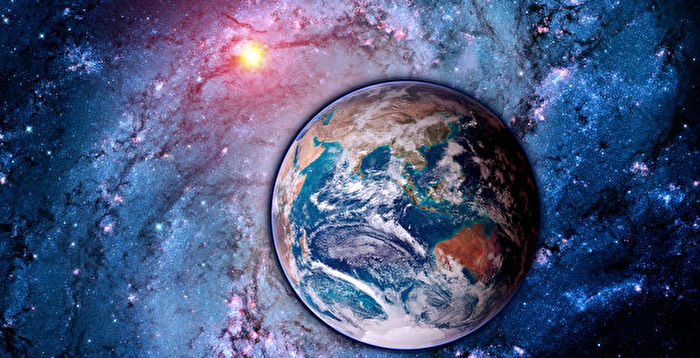[The Epoch Times, June 3, 2022](The Epoch Times reporter Di Rui compiled and reported) The latest analysis found that a meteorite picked up in the Egyptian desert did not come from any asteroid or comet, or even from the solar system. Condensate from a rare supernova has fallen to Earth.
This is the first time scientists have discovered evidence left by a Type Ia supernova. Ia supernova explosions are relatively rare phenomena in the universe, occurring only once or twice in every galaxy in hundreds of years. Meteorites formed by such events falling to Earth are even rarer.
In 1996, a small rock discovered by scientists in the Egyptian desert was later thought to be extraterrestrial, that is to say not produced on Earth. A recent analysis by researchers at the University of Johannesburg in South Africa shows that it is no ordinary meteorite, but may be the first physical evidence of a supernova ever seen.
A supernova explosion is one of the highest-energy celestial events in the universe. In previous studies, scientists have seen the powerful energy it emits in various wavelengths such as visible light and high-energy rays through telescopes. This time, for the first time, scientists have seen evidence of such an event.
The researchers used a proton beam to analyze the Hypatia meteorite. It turned out that the proportion of silicon in the stone was less than 1%, far lower than the proportion of silicon contained in any object in the solar system. Not only that, but the proportions of chromium, manganese, iron, sulfur, copper and vanadium contained in it do not conform to the laws of matter in the solar system.
“We found that several elements have proportional characteristics unlike anything in the solar system, both primordial and later-evolved,” said lead author Jan Kramers, a geochemist at the University of Johannesburg. Not the same. Not the same as the matter in the asteroid belt, meteors, etc. So we started to consider the possibility that it came from outside the solar system.”
They compared the characteristics of the material in the celestial body with several other possible sources, such as dust lanes between different star systems in the Milky Way, red giant stars, or Type II supernova explosions. Type II supernovae are events in which a massive star explodes after it runs out of fuel. As a result, the possibility of these sources was also ruled out one by one.
Finally, the researchers examined the possibility that it came from a Type Ia supernova. A Type Ia supernova is an explosion of a white dwarf star in an orbiting binary star system. Such explosions are powerful enough to break the white dwarf’s matter down to its atomic state. The researchers say that when these atoms meet the dust in the white dwarf nebula and condense, the proportion of chemical substances in the newly created solid matter has a unique pattern.
The study found that the chemical composition of the material in the Hypatia meteorite is close to the condensate from a Type Ia supernova explosion, although not 100 percent identical.
The research was published April 22 in the planetary science journal Icarus. ◇#
Responsible editor: Ye Ziwei
